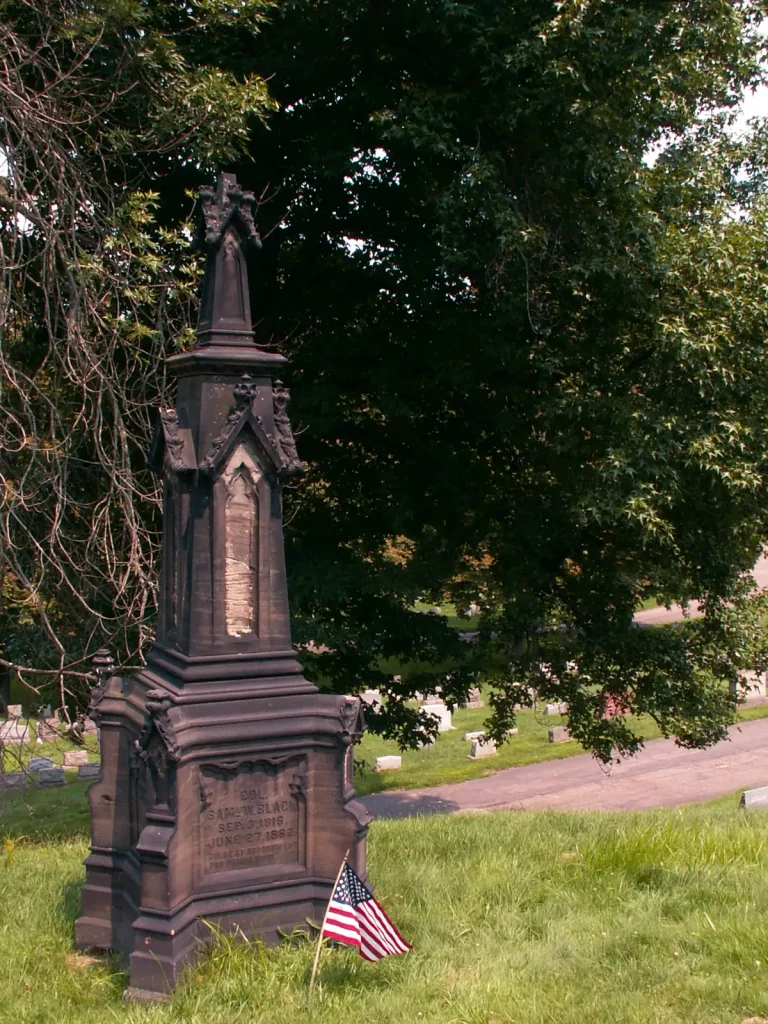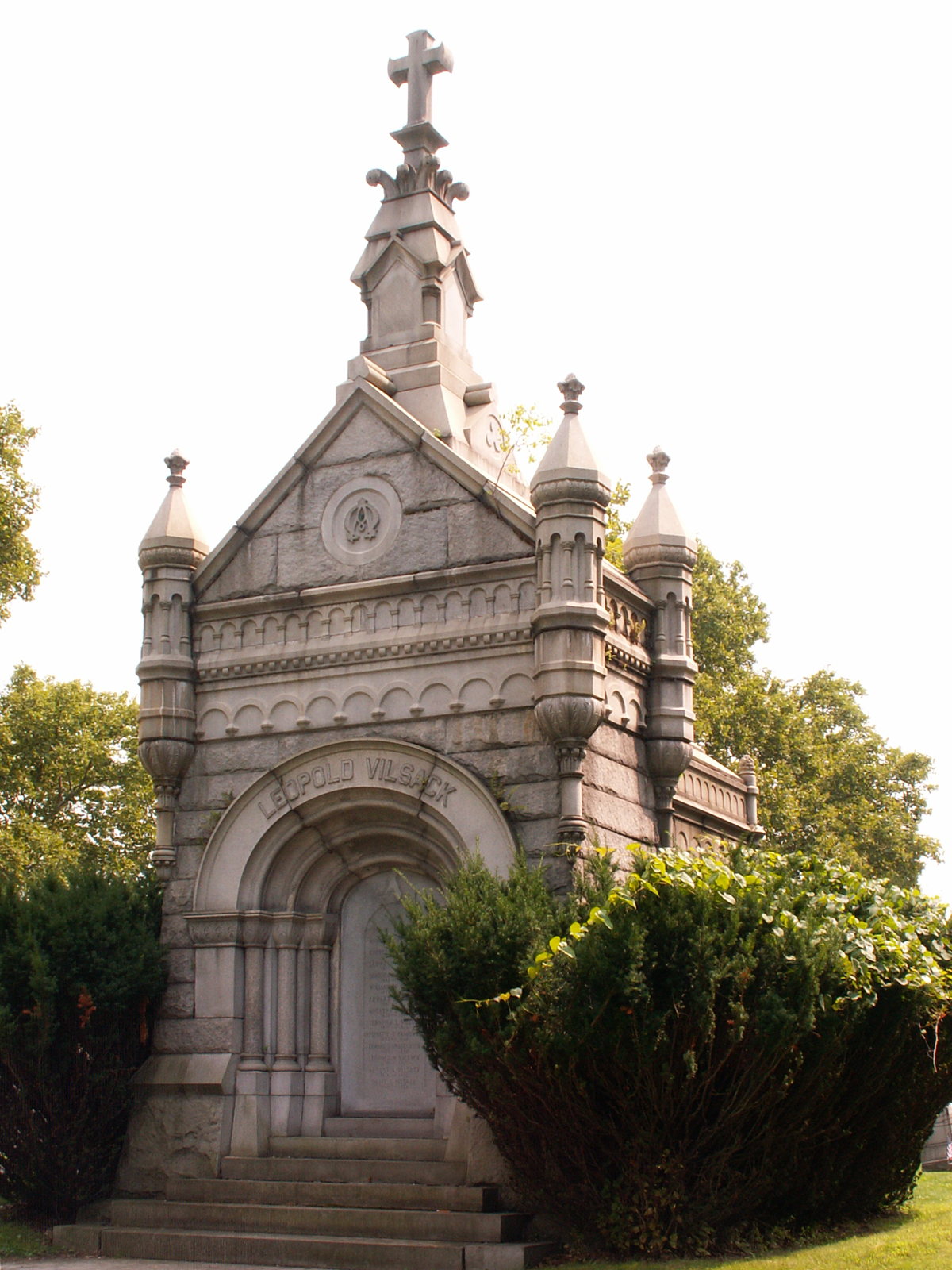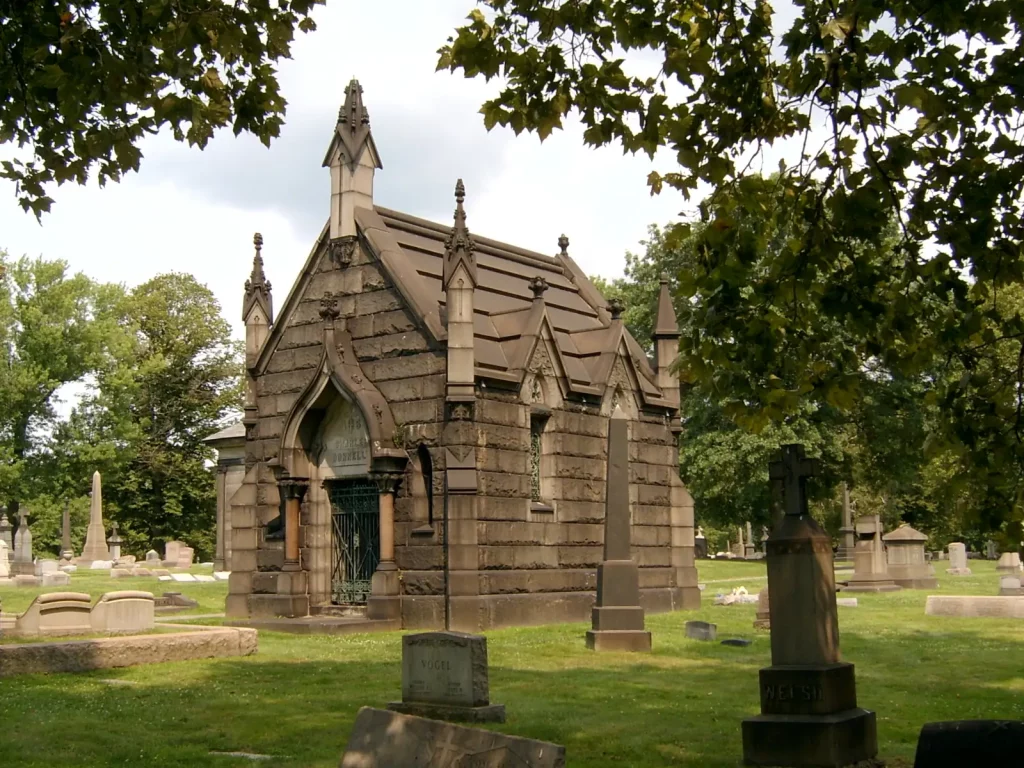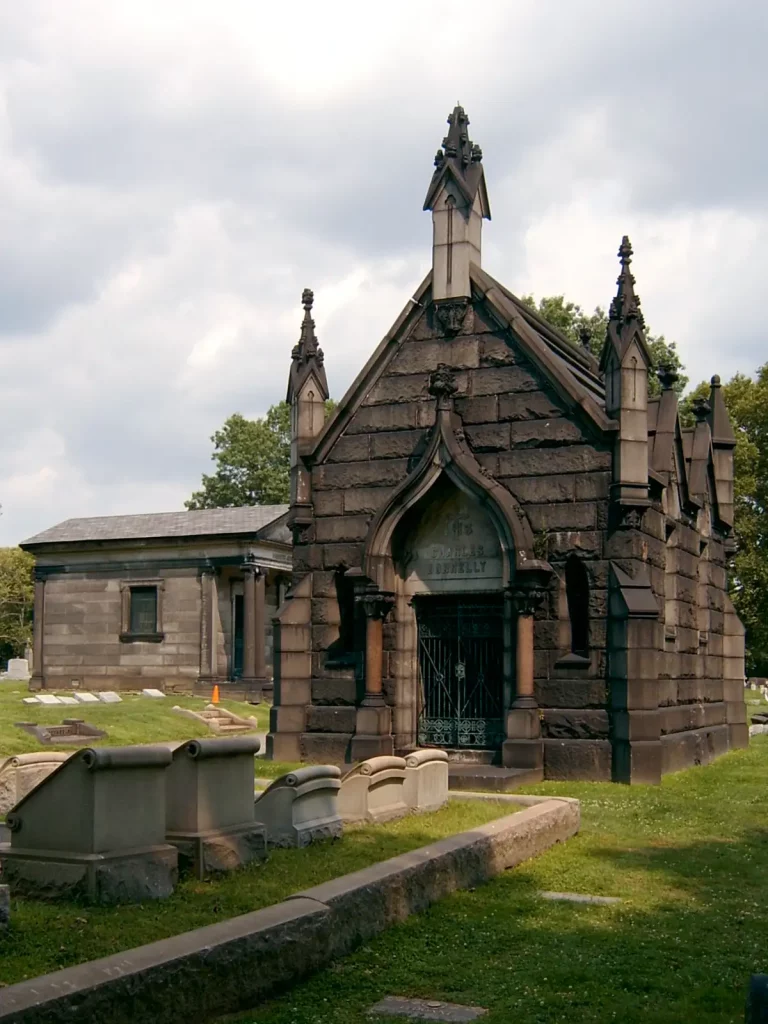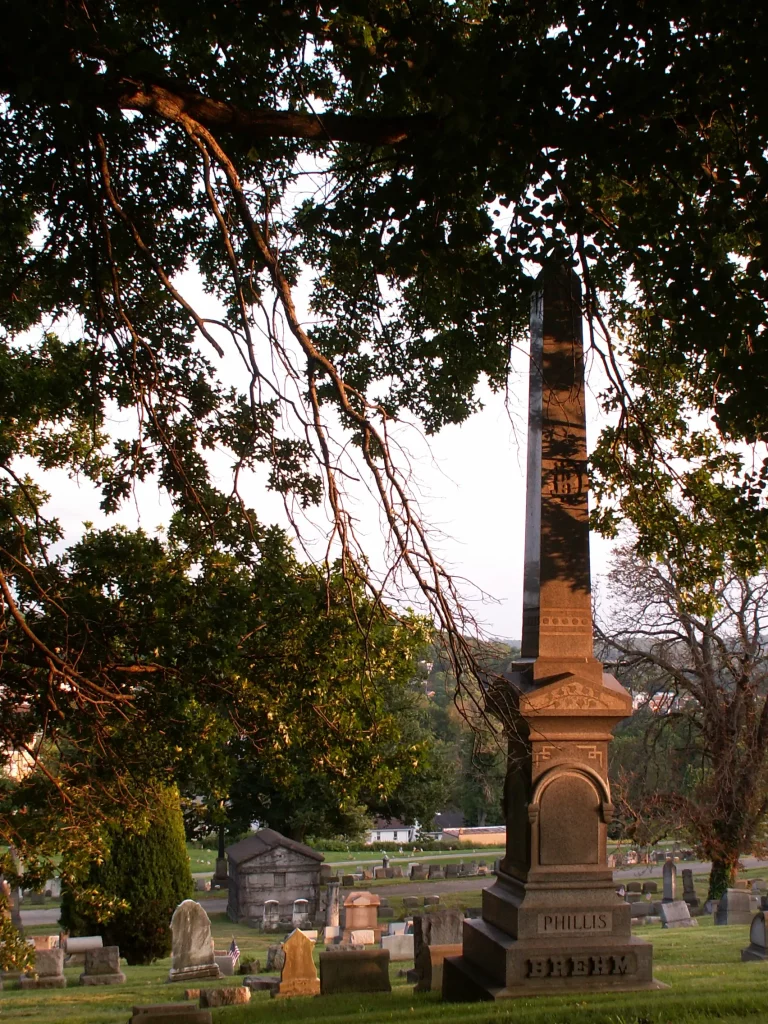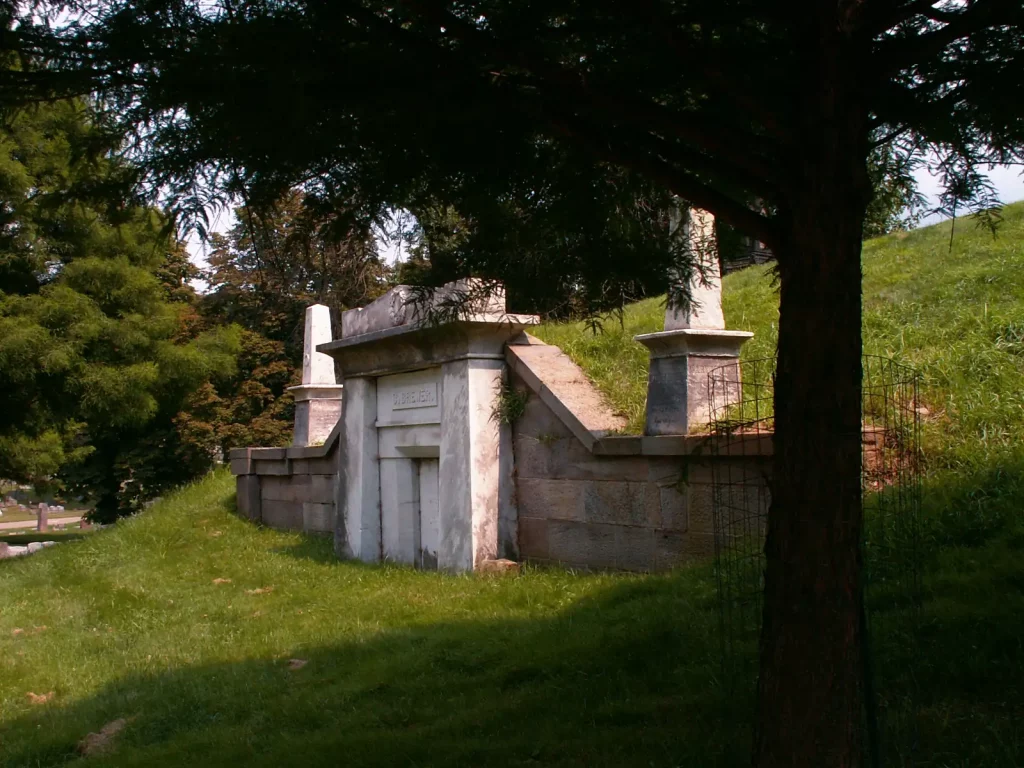
There are two distinct periods of Egyptian architecture in our cemeteries. The first, which has left few remains, came in the early and middle nineteenth century; the second, whose remains are abundant, was mostly in the early twentieth century. Here is a rare example of the earlier period, a mausoleum dating from about 1850. It is very different from the Hollywood-set Egyptian of the later period. Like most of the earliest mausoleums in the Allegheny Cemetery, it is dug into a hillside. The tapering pilasters and flanking obelisks mark the Egyptian character. Names and death dates of various Brewer family members are engraved on the bases of the obelisks.


